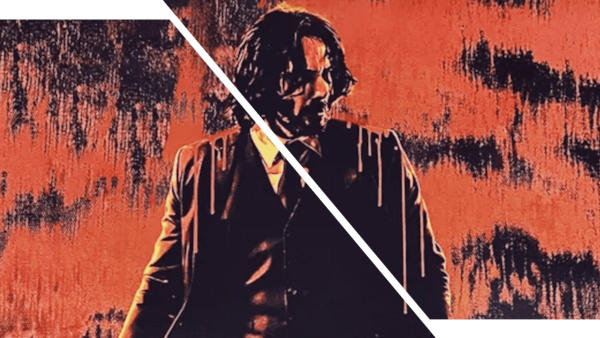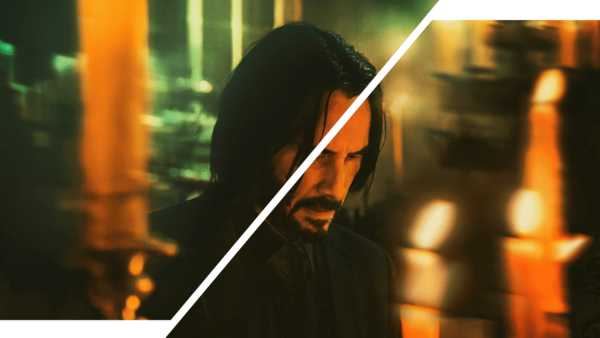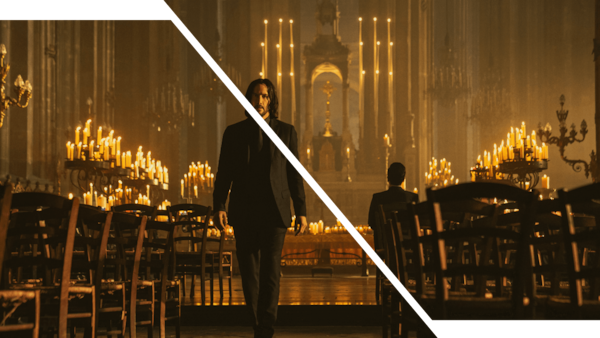John Wick: Chapter 4 & The Rent-Heart Hitman
This is #CineFile, where our critic Rahul Desai goes beyond the obvious takes, to dissect movies and shows that are in the news. Today — John Wick: Chapter 4

Last Updated: 02.03 PM, Mar 25, 2023
Beneath their remorseless violence, what the John Wick films reveal about heartbreak, and the blossoming of grief.
THE HAUNTED ACTION HERO isn’t new. It’s a trope as old as time. Nearly every protagonist in the history of action cinema comes from a space of damage and pain. Nearly all of them are broken, angry or some combination of both. They have nothing left to lose. They are often “ghosts in search of graveyards”. At times, this passes off as an excuse to justify the limited acting skills of these stars. (They aren’t emoting because they’re numb, you see). But mostly, it becomes the license to kill — and to express tragedy as the most physical version of itself. When we see them break bones, bodies and spirits, we are actually seeing the invincibility and vulnerability of heartbreak at once. It’s a stretch, but it’s probably the most accessible grammar of grief.
The reason the John Wick franchise represents the pinnacle of this genre is because it reveals grief as an endless journey. Beneath the remorseless slicing and shooting and stunts and style, it reveals heartbreak as a permanent and shapeless feeling. Not a feeling that goes away with time, but the sort that stays and evolves — the sort that one can only get more proficient at. These might sound like heavy words for what is, on paper, a hugely successful Hollywood action series about a retired hitman who sets out to avenge the murder of his dog. But the flesh is a front for some soul. The beagle puppy was a gift from his late wife, Helen. It was supposed to be his support animal. John Wick returns to the dark side — he returns to wreak havoc in the underworld he had walked away from at the peak of his powers — because his grieving process is derailed by that very world. When the Russian gangster’s son attacks Wick’s home in the first film, he is essentially attacking both the endurance of his love and his opportunity to break in peace.

WICK SPENDS the next two films in a closed loop of rage and revenge, hunting and being hunted across the globe. The action is relentless and masterful. The narrative design is slick and smart. At some meta level, John Wick is battling to be Keanu Reeves, a rare superstar who has over the years become synonymous with the freedom and dignity of grief. (“What do you think happens when we die, Keanu Reeves?” asked Stephen Colbert in the run-up to John Wick Chapter 3 — Parabellum. Reeves’ profoundly wise answer — “I know that the ones who love us will miss us” — prompted perhaps the most genuine handshake in talkshow history). But I’d like to believe that in a parallel (or normal) universe, Wick is an everyman lashing out in sadness. The High Table — the government of crime in the John Wick ecosystem — is perhaps a metaphor for a traditional society that isn’t built to indulge the humanity of loss. The intricate system keeps trying to punish Wick for breaking its rules, which is basically a way of suggesting that grieving cannot afford to be an isolated process.
What Wick himself learns over the four films is that, contrary to his rogue-wolf nature, he is not alone. He is aided by allies and friends and former colleagues. The High Table’s hostility towards anyone who helps Wick is a way of implying that grief has consequences, and that loved ones often bear the brunt of our suffering. John Wick: Chapter 4 is 171 minutes long — and likely the best of the lot — because it’s the film where all these themes emerge through a perfectly composed symphony of silence and violence. Much of the film features other people paying the price for Wick’s decisions. The film’s villain, a cold-blooded High Table member named Marquis Vincent de Gramont, targets anyone that has touched Wick. This list includes Winston, the manager of the New York Continental hotel, and his loyal concierge Charon. Then there’s Koji, the manager of the Osaka Continental hotel, and his daughter Akira. Marquis also chooses Caine — a blind High Table assassin, but more importantly, an old friend of Wick’s — to kill Wick.

IN OTHER WORDS, much of the film is built to make John Wick go from selfish to selfless. It is built to make him a more responsible griever. It’s not that he’s healing; he’s merely finding the courage to get familiar — and engage — with the hurt. He wanted out of the underworld, but he ends up fighting within it to undo the harm inflicted on those who stood by him. The film has newer characters and set pieces in New York, Osaka, Berlin and Paris — the climactic Paris one lasts for a whopping 31 minutes — but that’s just the outer language of what is more or less an inner story. Whether it’s the sensational traffic carnage at the Arc de Triomphe or a breathless combat sequence on the steps to the Sacre Coeur at sunrise, there’s never a doubt that John Wick is a man driven by the guilt and gratefulness of being able to grieve his way through the underworld. He feuds like a person who has recognised that, in killing like he had nothing left to lose, he developed something to lose. He was too brooding to notice the bonds that allowed him to brood.
In a sense, John Wick: Chapter 4 brings to mind After Life Season 3, particularly in terms of how it morphs into a Thank You tour. The Ricky Gervais-created series was also centered on a misanthropic and canine-loving male protagonist whose grief is bitter, until it’s not; the last season sees him finally waking up to all the goodness of his colleagues, friends, relatives and strangers in the small English town, and thanking them for putting up with his antics for so long. Keanu Reeves, too, supplies the ‘Baba Yaga’ with a softening of form, which is even visible in how he moves and shoots. He’s weary, wiser, older and fuller, and demonstrates that John Wick isn’t a cliche who wants to suddenly balance all the killing with some kindness. On the contrary, he is a haunted action hero who confronts the burden of feeling human. His payback becomes his liberation. His bullets become his altruism. In doing so, Wick lives up to his name: Neither the candle, nor the flame, but the porous supplier of fuel between the two. After all, what is oxygen but a fire going through grief?
